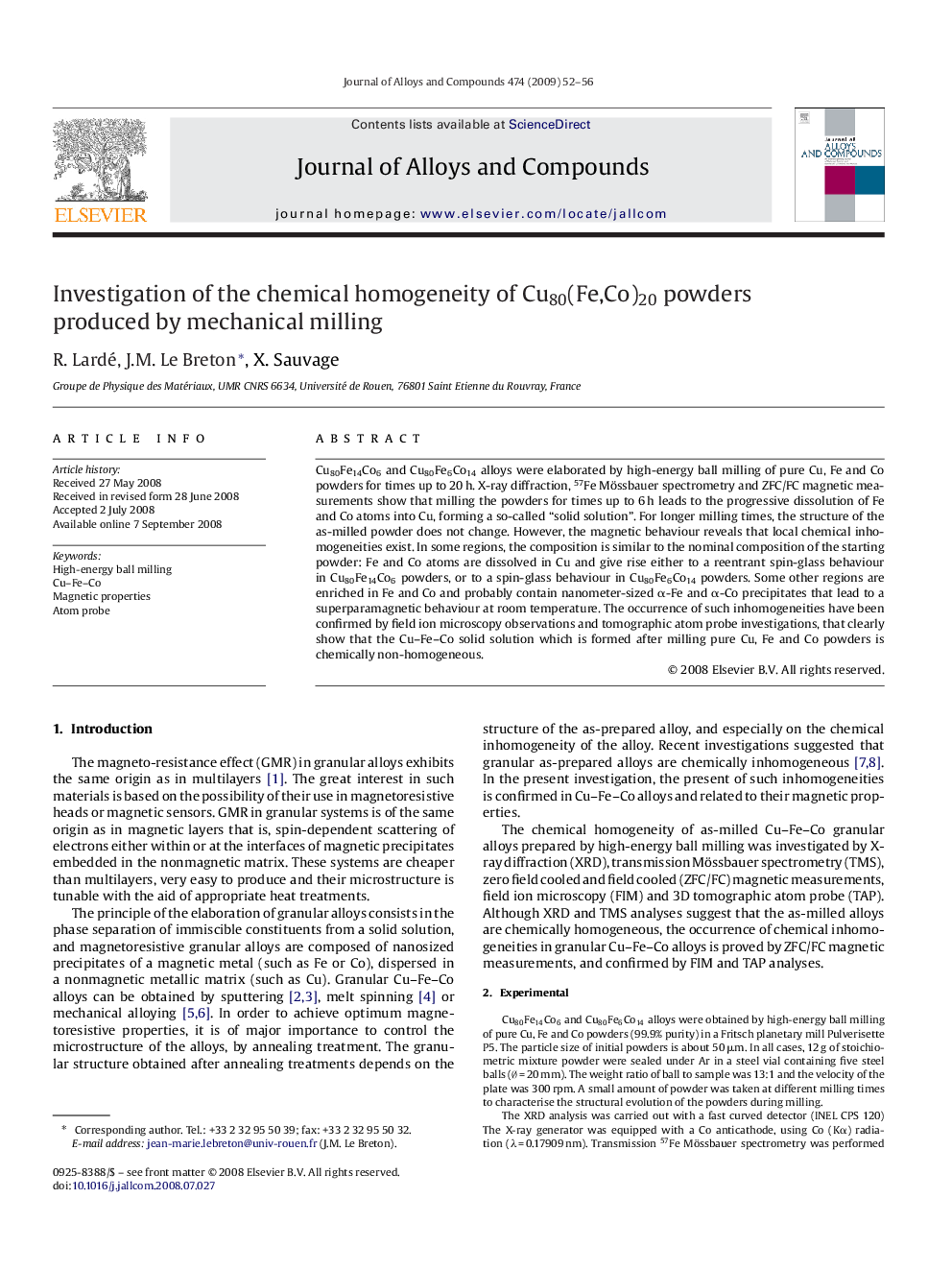| Article ID | Journal | Published Year | Pages | File Type |
|---|---|---|---|---|
| 1622822 | Journal of Alloys and Compounds | 2009 | 5 Pages |
Cu80Fe14Co6 and Cu80Fe6Co14 alloys were elaborated by high-energy ball milling of pure Cu, Fe and Co powders for times up to 20 h. X-ray diffraction, 57Fe Mössbauer spectrometry and ZFC/FC magnetic measurements show that milling the powders for times up to 6 h leads to the progressive dissolution of Fe and Co atoms into Cu, forming a so-called “solid solution”. For longer milling times, the structure of the as-milled powder does not change. However, the magnetic behaviour reveals that local chemical inhomogeneities exist. In some regions, the composition is similar to the nominal composition of the starting powder: Fe and Co atoms are dissolved in Cu and give rise either to a reentrant spin-glass behaviour in Cu80Fe14Co6 powders, or to a spin-glass behaviour in Cu80Fe6Co14 powders. Some other regions are enriched in Fe and Co and probably contain nanometer-sized α-Fe and α-Co precipitates that lead to a superparamagnetic behaviour at room temperature. The occurrence of such inhomogeneities have been confirmed by field ion microscopy observations and tomographic atom probe investigations, that clearly show that the Cu–Fe–Co solid solution which is formed after milling pure Cu, Fe and Co powders is chemically non-homogeneous.
